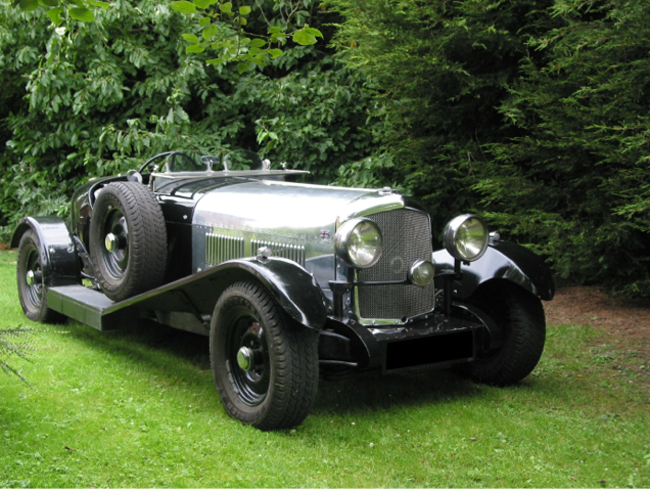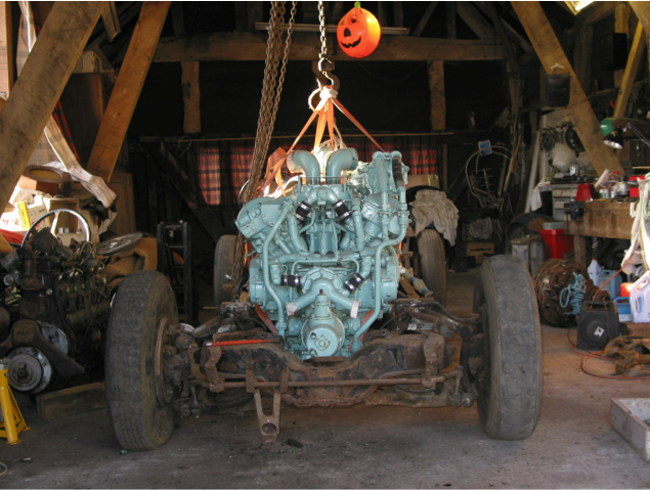This article is more than 1 year old
Hi-torque tank engines: EXTREME car hacking with The Register
Bentley found in a hedge gets WW2 lump insertion
Big-engine lazy torque is just a windup
But a 6.5 litre engine is not as big as specials get. A classic (if you’ll pardon the expression) example is Jumbo Goddard’s car. Just after the Second World War, Jumbo acquired an eight-litre Bentley engine, fitted it to a three-litre chassis and continued to tinker from there. The final incarnation has twin Garrett turbo chargers and develops in the region of 550bhp – which gives it, as Jeremy Clarkson would say, “lots of torques.”
Whilst size isn’t important of course, by the time I had finished the 6.5 litre I had fallen in love with the lazy torque of big engines, so I looked around for an even bigger one. I settled on a Meteor, which is a ground-based derivative of the 27-litre 12-cylinder Merlin aero-engine of WWII aviation fame; the Meteor was fitted to both the Cromwell and Centurion tanks.

The finished product. Photo: Mark Whitehorn
Why not an actual Merlin? Three reasons. Merlins have a supercharger that hangs much lower than the sump; that means raising the engine in the chassis, which compromises the handling. Secondly, the Merlin’s crankshaft rotates the opposite way from a car engine and I didn’t want to end up with five reverse gears. Once you have discounted those minor differences, Meteors are effectively Merlins. Of course, the Meteor produces less power than the Merlin but most people would consider 660bhp and 1,650ft/lbs of torque adequate for road use.
And it was the torque that occupied my mind for some time and led me to the second mod, a vehicle that's still a work in progress. I was unable to find any car gearbox that could stand 1,650 ft/lbs; even the Bugatti Veyron tops out at about 990 ft/lb. I worried about this for years (I do mean years, these rebuilds are quite lengthy processes). Then one day I realised that the torque problem was simply a windup.
Torque breaks gearboxes because the engine is applying a turning force and the rear wheels are resisting it. Unless I fitted dragster tyres, the rear tyres would effectively act as torque limiters by spinning, assuming that I was foolish enough to open the throttle too wide. So, whilst I went for a very strong box (another Tremec) I selected it more on the overdrive ratio (2.0:1) in order to compensate for the peak rpm of the Meteor – a mere 2,400.

Meteor engine on a Mk. VI chassis, photo: Mark Whitehorn
A more serious engineering problem was the flywheel and clutch combo. An auto box was one answer but I wanted a real gear lever and real gears. However, in most car engines the crankshaft pokes out of the rear of the crankcase and you can bolt a flywheel onto that. The origins of the Meteor mean the crankshaft doesn’t protrude from the crankcase at all, and there is only a splined hole in the end of the crankshaft.
Worse, there is no evidence that the crankshaft was ever designed to take the lateral thrust that a normal car engine has to endure when the clutch is depressed. So, how do you bolt a flywheel to a splined hole in the crankshaft? Simply pushing a splined shaft into the hole doesn’t, of itself, help because there is nothing to keep the shaft in the hole, nor anything to keep it spinning true.
